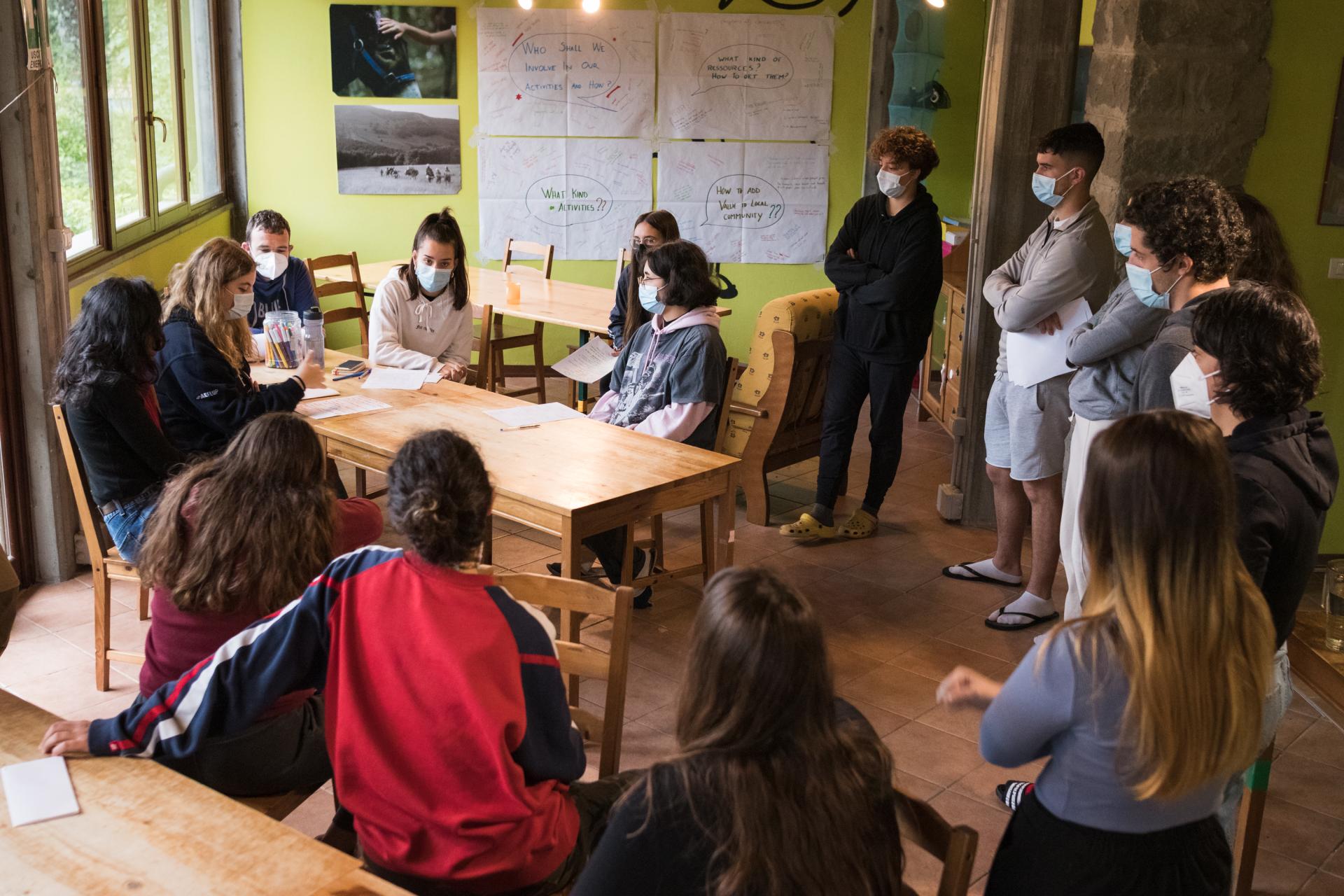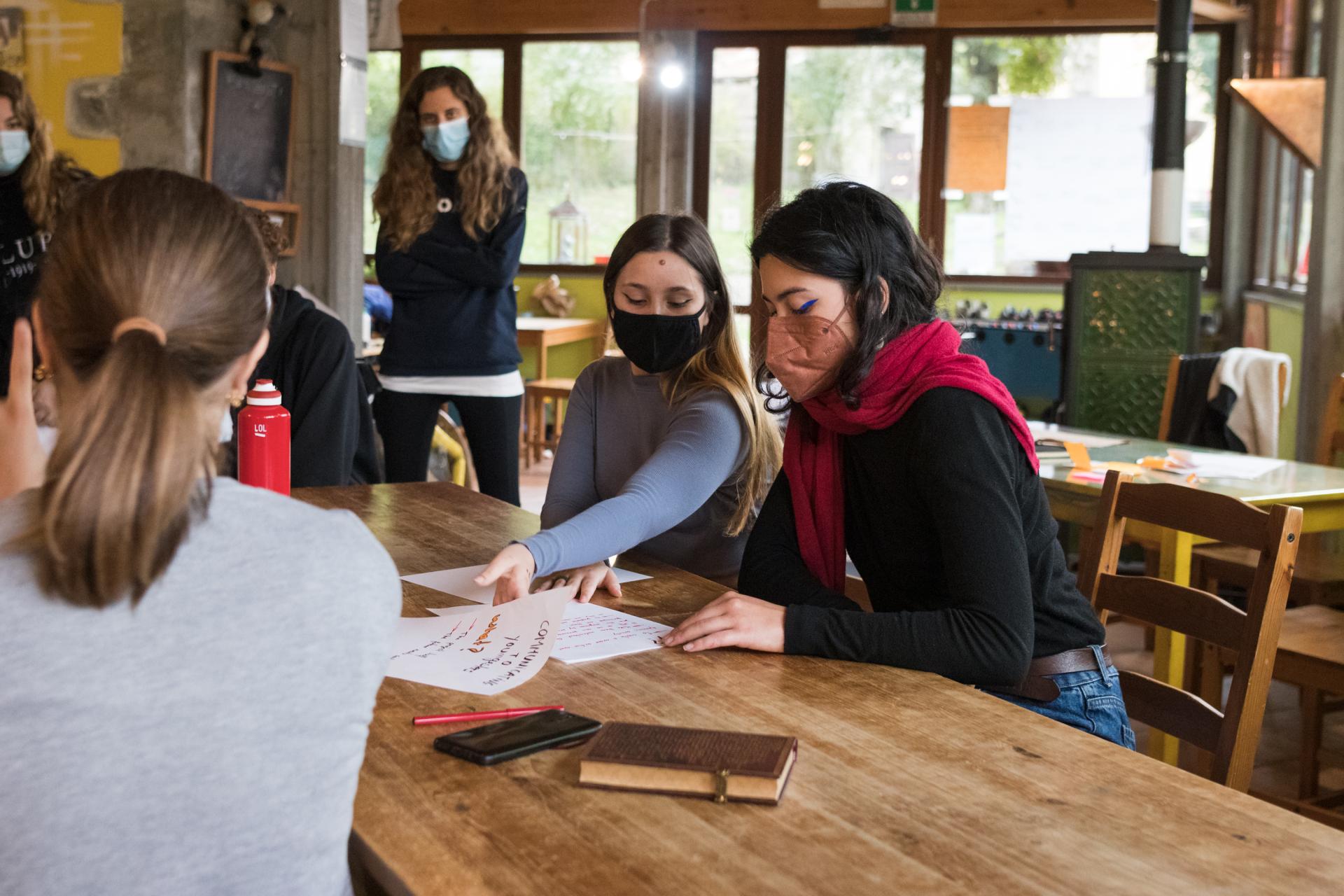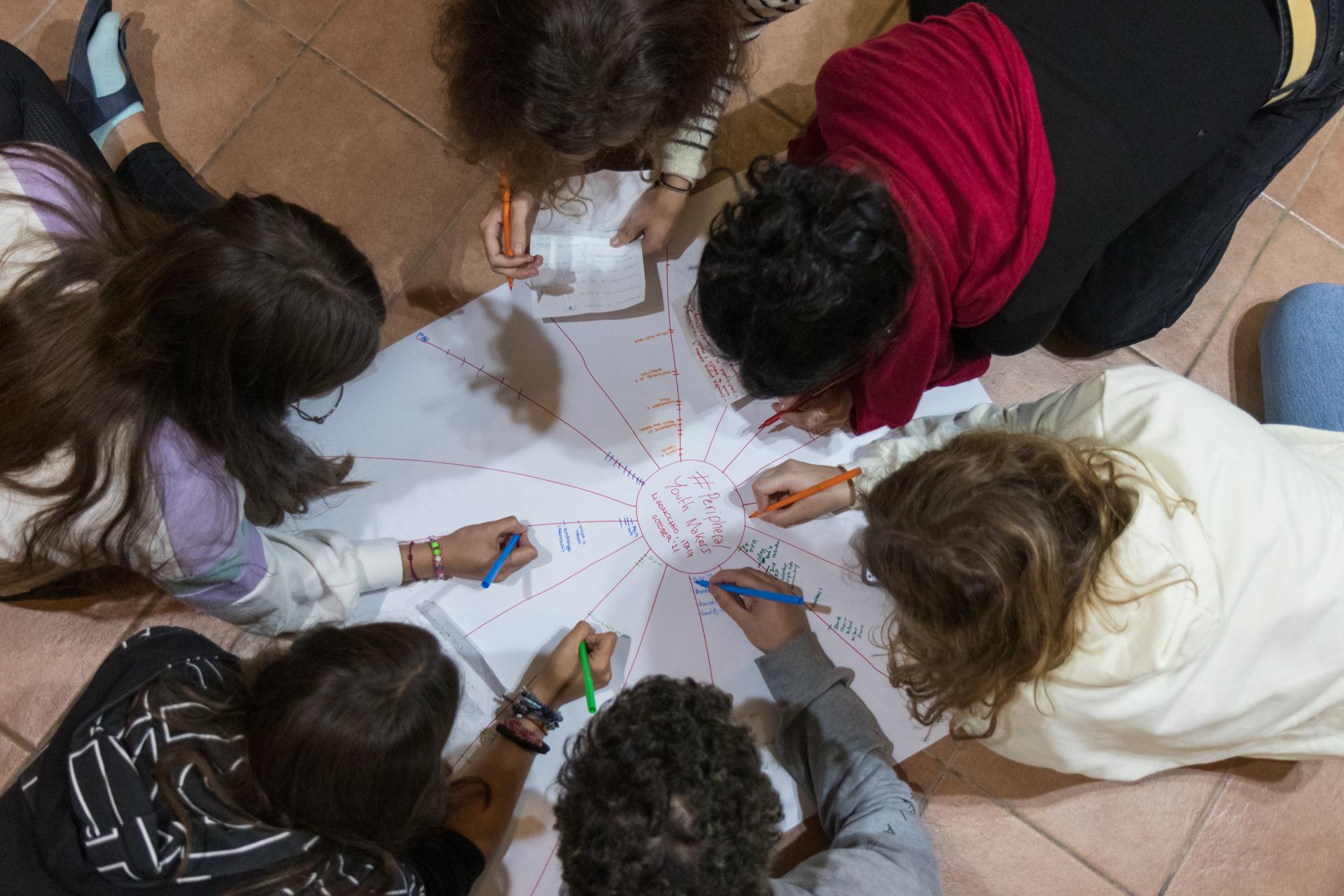PeripheralYouthMakers VíaVerdeOjosNegros
Basic information
Project Title
Full project title
Category
Project Description
#PeripheralYouthMakers is a project where groups of young people from rural areas get together to create ways of participation for youth in peripheral territories. This time a group of youngsters from different countries (ESP, IT and PT) will organize a 5 day bike route along Vía Verde Ojos Negros stopping in some villages to dynamize their population with artistic and cultural activities. In this way the group will provide tools and spaces to create new rural narratives for communities.
Geographical Scope
Project Region
Urban or rural issues
Physical or other transformations
EU Programme or fund
Which funds
Description of the project
Summary
The idea is going to be presented here is framed on the activities that have been occurring since 2019 under the name of #PeripheralEncounters in Spain and in line with the #PeriphealYouthMakers project, an idea funded by the Erasmus+ programme. In coordination with the Europimpulse Network association, another three entities (Red de Jóvenes Dinamizadores Rurales from Aragón, Associação Juventude de Vila Fonche from Portugal and the Associazione Legambiente Ligonchio from Italy) have been working on the dynamization of the rural areas through the environmental education, activism, arts and youth associationism. The idea we want to propose is to complete an old railway route that has been converted in a cycle pathway called Vía Verde-Ojos Negros. This route links several villages and its people. It takes part of their(our) history. It is our heritage. However, the depopulation of the past century has had crucial impacts which are still being felt by the local population. For this reason, we, the youth, propose to do not only this route by bike, but also to create itinerant cultural spaces across the route during the days we will cycle it. It will also work as a way to create new narratives in the peripheral areas in general and the rural areas in particular. We won’t do this alone. We are in contact with the respective municipalities, aggregation of municipalities, public administration representatives and the different environmental, social and artistic initiatives working in the terrain. We, the youth, want not only to be part of the change of mindsets but also to enhance and foster that change of mindsets in terms of mobility, ways of living/consuming, do politics, etc. Some of the activities that will take part of the bike route across the Via Verde-Ojos Negros will integrate the different areas of Arts like performing, visual and plastic arts.
Key objectives for sustainability
From the youth people to our villages; During the activities period, young people from different peripheral areas of Europe (Portugal, Spain and Italy) will be able to come together and meet at the village of Ojos Negros (Teruel, Spain). This space was the core of the industrialization as it was treated as a mine resources source. However, the infeasibility of that project and the modernization of the industry left unassisted this place and the linked area (the villages and the people of the regions which the old railway used to pass by). Besides this, the rural exode was a fatal match to increase the depopulation of these areas, the rural areas. This has caused tremendous consequences impacting on different ways to the people and the territory. For this reason, we want to take part in a change of narrative about our region, the rural and peripheral area. The helplessness and obscurity, the lack of connection and interaction between the regions is going to be faced by proposing artistic and social activities taking the environmental sustainability into account. As the old railway was transformed into a cycle pathway, the idea is to bring these activities to the people living in the areas through bicycles following this transformed old and historic route. This will also work as a way to reduce not only the physical barriers that have been built between the different regions but also to reduce the mental barriers in a “liquid life” (citing the concept of Zygmunt Bauman) where speed and time are consuming us. With this, we would like to encourage an efficient and environmentally sustainable mobility through the different areas using bicycles.
Key objectives for aesthetics and quality
The itinerary of the bike route along the Vía Verde would be an opportunity to create new narratives about youth and rurality.Being a meeting place for young people from rural areas of different countries, the dialogue and relationships are full of interculturality. It is possible to generate a space in which these young people can discover connections and common points about their experiences in rural areas, regardless of the country, as well as they can also recognize the particularities of the realities that each one lives in their territories. Different kinds of arts converge in this project: all the young people participating in the event have an interest in the arts in general and have also developed skills and tools to experience their experiences, some through the visual arts, others through the performing arts and there are those who feel more comfortable exploring music. All this artistic range is essential for the project to give that opportunity to narrate and give new meaning to rurality and youth. Therefore, this journey will be lived and felt from the multiple artistic expressions that will be proposed from the young people themselves. The artistic activities will not only be able to live the participants of the project but they will be activities so that the populations of the towns that we visit also can participate and enjoy. Thus, this aesthetic experience that will be intensely shared on the Vía Verde but that will be lived before the tour, in each of the participants, will be the key to rethinking the realities of the territories and peripheral communities.
Key objectives for inclusion
This project will be set up to enhance the participation of the public opinion in the activities that occur in their village. The idea is to give them the tools for taking the leadership and, in a collective way, propose methodologies which enables the participants to feel owners of the proposed activity. This pretends to foster the cooperation in design, the engagement of the young people in order to make the projects more sustainable on the time. At the end, if the public opinion feels empowered, their empowerment will end up being true. This project will help to give the youth the spaces of recognition that everyone deserves, but especially, the youngest of the rural areas. This is important, not only for the sustainability of this project but for them, the people who are going to make that artistic activities true. Besides, in the peripheral areas, young people think they cannot make their dreams come true, but how is that possible, especially in these interconnected times? As we have been discovering through different activities, once someone sees in some of his/her pair (someone else of his or her age) the ability or capacity of succeeding doing an artistic work, this person will immediately foster his or her self-esteem. This will open him/her a different and a new world of opportunities (to sew alliances, entrepreneurship or add her/himself to an on-going initiative). During the training process (non-formal education), the participants will not have to commit money to be part of the team. What is more, all the costs will be covered.
Physical or other transformations
Innovative character
Inclusion, aesthetics and environment are pillars of the idea, here explained, with potential to be developed. The concept tries to link the lack of spaces of recognition and expression that some young people can find in the rural and peripheral areas, the sense of belonging to the area where the artistic activities are planned to be developed and the environmental responsibility not only through the implementation process, but also thinking on the nature as a relevant actor with whom we keep a dependent relationship. It is crucial and pertinent to address these three dimensions in every project/concept/idea. They need to be transversal in every single project, the imbrication of civil society, the cultural heritage and the nature are a symbol. It is important to recognise the dimension of what this linkage and inclusion can achieve in terms of nature protection, cultural heritage protection and society protection. For instance, breaking with isolation by working together, thinking on the necessities of nature by identifying environmental risks of the potential activities, foster peripheral encounters within civil society, public and private entities to create new narratives around what people find necessary. Besides, behind these activities there is also a main aim that it is simply to open and establish the place, where the activities are thought to take place, as symbolic and experimentation space of creativity, solidarity, and environmental sustainability.



